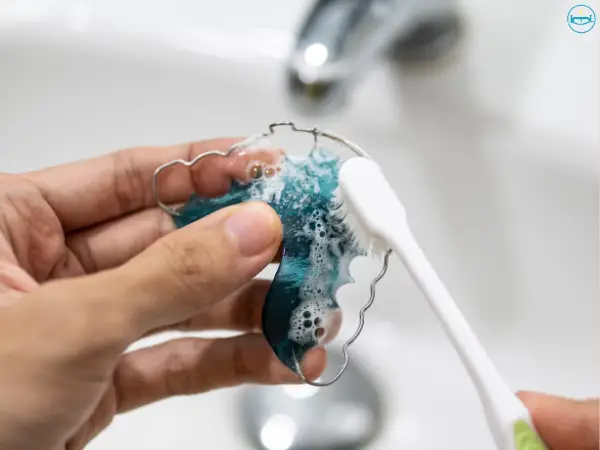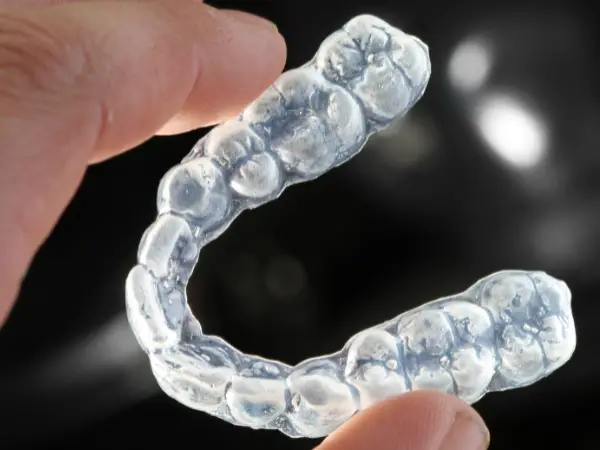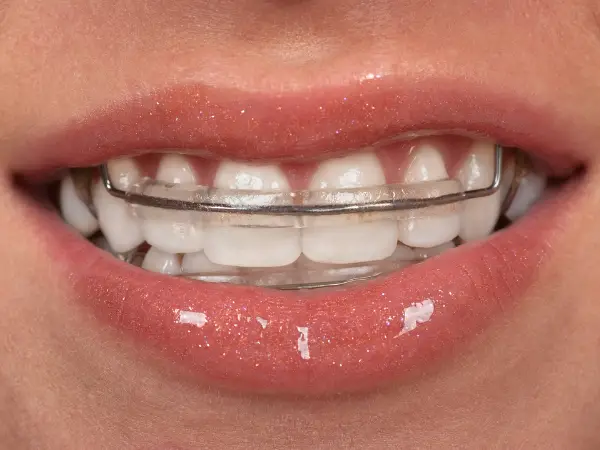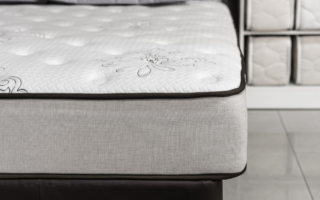Wearing a retainer can cause discomfort, especially at night. This can disrupt your sleep and affect your overall well-being. Pain from retainers often comes from pressure on the teeth or irritation of the gums. It’s crucial to find ways to alleviate this discomfort for better sleep quality.
Implementing simple strategies can help reduce pain and improve sleep. This guide provides 8 practical tips to help you sleep comfortably with retainer pain.
Tip 1: Proper Retainer Care
Tip 1 for sleeping comfortably with retainer pain is ensuring proper retainer care. Proper care not only reduces discomfort but also extends the life of your retainer.
Cleaning Guidelines
Regular and thorough cleaning of your retainer is vital. A clean retainer reduces bacteria and prevents infections that can cause pain. Follow these steps for effective cleaning:
- Daily Cleaning: Clean your retainer every day using a soft toothbrush and non-abrasive toothpaste.
- Deep Cleaning: Once a week, soak your retainer in a denture cleaning solution to remove any buildup.
- Avoid Hot Water: Hot water can warp your retainer. Use lukewarm water instead.
- Rinse After Eating: Always rinse your retainer with water after eating to remove food particles.
- Use Retainer Cleaner: Retainer cleaning tablets are available. Follow the instructions on the package.
Here’s a simple table to summarize the cleaning guidelines:
| Cleaning Step | Frequency | Additional Notes |
|---|---|---|
| Daily Brushing | Every day | Use a soft toothbrush and non-abrasive toothpaste |
| Deep Cleaning | Once a week | Use denture cleaning solution |
| Rinsing | After every meal | Use lukewarm water |
Storage Practices
Proper storage of your retainer is as important as cleaning it. Incorrect storage can lead to damage and increased discomfort. Follow these storage practices to keep your retainer safe:
- Use a Case: Always store your retainer in its protective case when not in use.
- Avoid Heat: Keep your retainer away from heat sources like sunlight, stoves, and heaters.
- Keep It Dry: After cleaning, dry your retainer before placing it in the case to prevent bacterial growth.
- Label Your Case: If you have multiple retainers or live with others, label your case to avoid mix-ups.
- Travel Smart: When traveling, carry a spare case and ensure your retainer is securely packed.
Here’s a simple table to summarize the storage practices:
| Storage Step | Details | Additional Notes |
|---|---|---|
| Use a Case | Always store in a case | Protects from damage |
| Keep Away from Heat | Avoid heat sources | Prevents warping |
| Keep It Dry | Dry before storing | Prevents bacteria |

Tip 2: Pain Management Techniques
Tip 2: Pain Management Techniques focuses on effective strategies to alleviate pain and ensure a restful night’s sleep.
Oral Pain Relief Options
Oral pain relief options can be very effective in managing retainer pain. These methods provide quick and targeted relief to the source of discomfort.
Here are some common oral pain relief techniques:
- Saltwater Rinse: Mix a teaspoon of salt in a glass of warm water. Rinse your mouth for about 30 seconds. This helps reduce inflammation and soothes sore spots.
- Cold Compress: Apply a cold compress or ice pack wrapped in a cloth to the outside of your mouth. This numbs the area and reduces swelling.
- Oral Gel: Use an oral gel designed for toothache relief. Apply it directly to the painful areas following the product’s instructions.
- Soft Food Diet: Stick to soft foods like yogurt, mashed potatoes, and smoothies. This reduces pressure on your teeth and minimizes pain.
Over-the-counter Remedies
Over-the-counter remedies offer a convenient way to manage retainer pain. These products are easily accessible and can be highly effective.
Common over-the-counter options include:
- Ibuprofen: This pain reliever reduces inflammation and provides relief from moderate pain. Follow the dosage instructions on the package.
- Acetaminophen: A good alternative if you can’t take ibuprofen. It helps alleviate pain but doesn’t reduce inflammation.
- Topical Anesthetics: Products like benzocaine gels can numb the painful areas in your mouth. Apply as directed for immediate relief.
- Oral Rinses: Mouthwashes containing ingredients like hydrogen peroxide can help clean and soothe irritated areas.
Combining these remedies with oral pain relief options can significantly improve comfort and help you sleep better. Always consult with a healthcare provider before starting any new medication.

Tip 3: Adjusting Retainer Wear Schedule
Effective way to tackle this discomfort is by adjusting your retainer wear schedule. This method helps your mouth gradually get used to the retainer, making sleep more comfortable over time. Below are some helpful strategies to consider.
Gradual Increase In Wear Time
Gradually increasing the amount of time you wear your retainer can significantly reduce pain. This approach helps your mouth slowly adapt to the pressure, easing discomfort.
Start with shorter periods during the day. For example, wear the retainer for just an hour or two at a time initially. This allows your mouth to get used to the new appliance without overwhelming it.
After a few days, you can increase wear time incrementally. Try adding an extra hour each day. This slow and steady method ensures that your mouth adjusts without causing intense pain.
| Day | Wear Time |
|---|---|
| Day 1 | 1-2 hours |
| Day 2 | 2-3 hours |
| Day 3 | 3-4 hours |
| Day 4 | 4-5 hours |
Continue this pattern until you can comfortably wear the retainer for the entire day. Remember, it’s essential to listen to your body. If the pain becomes too intense, slow down the process.
Taking Breaks
Taking breaks can also help manage retainer pain effectively. Removing the retainer for short periods can provide relief, making it easier to sleep.
Set specific intervals to remove your retainer. For instance, you might choose to take it out every two hours for a 10-minute break. This reduces the constant pressure on your teeth, allowing them to relax.
During these breaks, it’s essential to clean your retainer. This practice not only maintains oral hygiene but also gives your mouth a fresh feeling. Use a soft toothbrush and mild soap or retainer cleaner.
- Remove retainer every 2 hours
- Take a 10-minute break
- Clean retainer during breaks
To ensure your mouth remains comfortable, stay hydrated. Drinking water helps reduce dry mouth and can alleviate some discomfort associated with wearing a retainer.
By incorporating these breaks into your schedule, you can make the process of wearing a retainer more tolerable and improve your chances of a good night’s sleep.

Tip 4: Soft Diet Recommendations
A soft diet can make a big difference. This section focuses on Tip 4: Soft Diet Recommendations. Choosing the right foods can ease the discomfort and help you sleep better.
Foods To Avoid
Certain foods can make retainer pain worse. Avoid them to ensure a more comfortable night. Here are some foods to steer clear of:
- Crunchy Foods: Chips, nuts, and granola can put extra pressure on your teeth.
- Hard Foods: Hard candies, apples, and raw vegetables can be tough to chew.
- Sticky Foods: Caramel, gum, and gummy candies can stick to your retainer.
- Acidic Foods: Citrus fruits and vinegar-based dressings can irritate your gums.
- Spicy Foods: Hot peppers and spicy sauces can cause discomfort in your mouth.
Avoiding these foods can reduce pain and help you get a better night’s sleep.
| Food Type | Examples |
|---|---|
| Crunchy | Chips, Nuts, Granola |
| Hard | Hard Candies, Apples, Raw Vegetables |
| Sticky | Caramel, Gum, Gummy Candies |
| Acidic | Citrus Fruits, Vinegar-based Dressings |
| Spicy | Hot Peppers, Spicy Sauces |
Soft And Soothing Options
Eating soft foods can ease retainer pain. They are easy to chew and won’t put pressure on your teeth. Consider these soothing options:
- Yogurt: Smooth and creamy, it can be very soothing.
- Mashed Potatoes: Soft and warm, perfect for a comforting meal.
- Scrambled Eggs: Easy to chew and rich in protein.
- Oatmeal: Warm and soft, great for breakfast.
- Bananas: Soft and easy to eat.
These options can make eating easier and less painful. They are also nutritious, helping you stay healthy.
| Soft Foods | Benefits |
|---|---|
| Yogurt | Smooth, Creamy, Soothing |
| Mashed Potatoes | Soft, Warm, Comforting |
| Scrambled Eggs | Easy to Chew, Protein-Rich |
| Oatmeal | Warm, Soft, Great for Breakfast |
| Bananas | Soft, Easy to Eat |
Choosing the right foods can make a big difference. Stick to these soft and soothing options to ease your retainer pain and sleep comfortably.

Tip 5: Applying Heat Or Cold Therapy
Effective way to manage this discomfort is through heat or cold therapy. This method can help reduce inflammation, soothe sore areas, and promote relaxation. Below, we dive into two popular techniques: hot compresses and cold packs.
Hot Compresses
Using a hot compress can be incredibly soothing for retainer pain. Heat helps to relax your muscles and increase blood flow to the affected area. Here’s how you can use hot compresses effectively:
- Warm Towel: Soak a towel in warm water, wring it out, and place it on your face near the pain.
- Heating Pad: Use a heating pad on a low setting and place it against your cheek.
- Microwaveable Heat Pack: Heat a microwaveable pack as per the instructions and apply it to the area.
Here’s a quick table for easy reference:
| Method | Instructions | Duration |
|---|---|---|
| Warm Towel | Soak in warm water, wring out | 10-15 minutes |
| Heating Pad | Set on low, apply to cheek | 15-20 minutes |
| Microwaveable Pack | Heat as per instructions | 10-15 minutes |
Ensure the compress is not too hot to avoid burns. Always check the temperature before applying it to your skin. Repeat the process before bedtime to ease the pain and help you sleep better.
Cold Packs
Cold packs are another excellent option for managing retainer pain. Cold therapy helps to numb the pain and reduce swelling. Here’s how you can use cold packs effectively:
- Ice Pack: Wrap an ice pack in a thin cloth and apply it to the painful area.
- Frozen Peas: A bag of frozen peas can serve as a flexible cold pack.
- Cold Gel Packs: These are designed for easy application and can be kept in the freezer.
Here’s a quick table for easy reference:
| Method | Instructions | Duration |
|---|---|---|
| Ice Pack | Wrap in cloth, apply to area | 10-15 minutes |
| Frozen Peas | Use as flexible cold pack | 10-15 minutes |
| Cold Gel Pack | Freeze and apply to area | 10-15 minutes |
Always wrap the cold pack in a cloth to prevent frostbite and skin damage. Apply it for short durations and take breaks in between. Cold packs can be especially useful right before bedtime to numb the discomfort and help you fall asleep more easily.
Tip 6: Mindfulness And Relaxation Techniques
These techniques can help you relax and manage the discomfort. They include breathing exercises and guided meditation.
Breathing Exercises
Breathing exercises can significantly reduce retainer pain and help you sleep better. Here are some simple techniques:
- Deep Breathing: Sit or lie down in a comfortable position. Inhale deeply through your nose, filling your lungs completely. Hold your breath for a few seconds, then exhale slowly through your mouth. Repeat this process for 5-10 minutes. This helps relax your body and mind.
- 4-7-8 Technique: This method is great for quick relaxation. Breathe in quietly through your nose for 4 seconds. Hold your breath for 7 seconds. Exhale completely through your mouth for 8 seconds. Practice this cycle 4 times to calm your nervous system.
- Box Breathing: Also known as square breathing, this technique involves inhaling for 4 seconds, holding your breath for 4 seconds, exhaling for 4 seconds, and holding your breath again for 4 seconds. Repeat this cycle 5-6 times to help alleviate discomfort.
These exercises are easy to follow and can be done anywhere, anytime. Incorporate them into your nightly routine for the best results.
Guided Meditation
Guided meditation helps focus your mind and reduce the perception of pain. Here are some popular methods:
- Body Scan Meditation: Lie down in a comfortable position. Close your eyes and take a few deep breaths. Focus on different parts of your body, starting from your toes and moving up to your head. Notice any tension or discomfort and consciously relax those areas. This helps you become aware of your body and ease the pain.
- Visualization: Imagine a peaceful place, like a beach or forest. Picture yourself there, enjoying the sights, sounds, and smells. This technique can distract your mind from the pain and promote relaxation.
- Progressive Muscle Relaxation: Tense and relax different muscle groups in your body, starting from your feet and moving up to your head. Hold the tension for a few seconds, then release it. This practice helps release physical tension and reduce discomfort.
Listening to guided meditation recordings can be very helpful. Many apps and websites offer free sessions. Try different methods to find what works best for you.
Tip 7: Seeking Professional Assistance
One crucial strategy to ease this discomfort is seeking professional assistance. This tip involves reaching out to experts who can help alleviate the pain effectively.
Consulting Orthodontist
Consulting with your orthodontist is essential if you are experiencing retainer pain. They are the experts in dental appliances and can provide personalized solutions. Here are some reasons to consult your orthodontist:
- Proper Fit: They can check if your retainer fits correctly. An ill-fitting retainer can cause unnecessary pain.
- Adjustments: Orthodontists can make necessary adjustments to reduce discomfort.
- Advice: They can offer tips on wearing the retainer without pain.
During your visit, be sure to:
- Describe your pain: Be specific about when and where you feel the discomfort.
- Follow their instructions: Adhere to their guidance on how to wear and care for your retainer.
- Ask questions: Don’t hesitate to seek clarifications on anything you don’t understand.
A consultation with your orthodontist can make a significant difference in managing retainer pain and ensuring you sleep comfortably.
Physical Therapy
Physical therapy is another effective approach to manage retainer pain. A physical therapist can teach you exercises and techniques to alleviate discomfort. Here are some benefits of physical therapy:
- Muscle Relaxation: Exercises that target jaw muscles can reduce pain.
- Improved Posture: Good posture can alleviate pressure on your jaw.
- Stress Relief: Techniques like massage can relieve tension caused by the retainer.
Consider these steps when incorporating physical therapy:
- Find a specialist: Look for a physical therapist experienced in jaw pain.
- Regular sessions: Attend sessions consistently for best results.
- Practice at home: Continue exercises and techniques at home as recommended.
Physical therapy can be a valuable addition to your routine, helping you sleep without retainer pain.
Tip 8: Maintaining Overall Oral Health
Crucial tip for reducing retainer pain is maintaining overall oral health. A healthy mouth can make a significant difference in how comfortable you feel while wearing your retainer. This section will focus on two key aspects: regular dental check-ups and proper brushing and flossing.
Regular Dental Check-ups
Regular dental check-ups are vital for anyone wearing a retainer. These visits help in detecting and addressing potential issues early. It’s best to see your dentist at least twice a year. Here are some key benefits:
- Early Detection of cavities, gum disease, or other oral problems.
- Professional Cleaning to remove plaque and tartar that regular brushing might miss.
- Adjustment of your retainer to ensure a proper fit, reducing discomfort.
During these visits, your dentist can also provide personalized advice. This can include tips specific to your dental needs, ensuring that your retainer does not cause unnecessary pain.
Regular check-ups can prevent minor issues from becoming significant problems. A well-maintained retainer and healthy mouth can significantly reduce pain and discomfort.
Proper Brushing And Flossing
Proper brushing and flossing techniques are essential for anyone wearing a retainer. These practices help maintain oral hygiene and prevent plaque buildup. Here’s a step-by-step guide:
- Brush your teeth at least twice a day with fluoride toothpaste.
- Use a soft-bristle toothbrush to avoid damaging your gums or retainer.
- Brush gently around the retainer brackets and wires.
- Floss daily to remove food particles and plaque between teeth.
- Use a floss threader or water flosser for hard-to-reach areas.
Proper brushing and flossing can prevent gum disease and cavities, which can cause additional pain while wearing a retainer. Keeping your retainer clean is also crucial. Rinse it daily with water and use a retainer cleaner once a week. Avoid using hot water, as it can warp the retainer.
Maintaining good oral hygiene can make a significant difference in your comfort levels. It can also extend the life of your retainer, ensuring that it continues to fit well and function properly.
Frequently Asked Questions
How To Sleep With A Painful Retainer?
Use orthodontic wax to reduce discomfort. Take over-the-counter pain relievers. Stick to soft foods before bed. Maintain good oral hygiene. Consult your orthodontist for persistent pain.
How Do I Stop My Mouth From Hurting From My Retainer?
Use orthodontic wax on sharp edges. Rinse with warm salt water. Take over-the-counter pain relievers. Wear your retainer regularly to adjust. Consult your orthodontist if pain persists.
Why Do Retainers Hurt More At Night?
Retainers can hurt more at night because teeth shift back slightly during the day. Nighttime wear repositions them, causing discomfort.
Should I Put My Retainer In Even If It Hurts?
Yes, wear your retainer even if it hurts. Discomfort is normal initially. If pain persists, consult your orthodontist.



